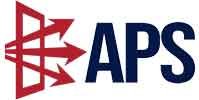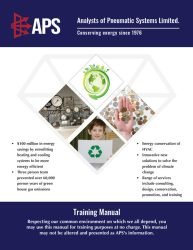The APS manual highlights concerns about the effectiveness of HVAC system upgrades in mitigating COVID-19 transmission. While authorities have recommended increasing ventilation and upgrading filters to MERV 13, APS questions the necessity and efficacy of these measures.
According to a member of ASHRAE’s Epidemic Task Force, the turbulence within HVAC systems may deactivate the virus because of turbulence, making it unclear if the virus remains viable when distributed through HVAC systems. APS found no existing research that confirms the viability of the virus after passing through HVAC turbulence, suggesting that millions of dollars may be spent addressing a non-existent threat. Additionally, the manual proposes a testing method to evaluate the viability of the virus in HVAC systems.
The report also raises environmental and economic concerns, noting that increased ventilation can drastically raise greenhouse gas emissions and operational costs. For example, one high school spent $3.9 million on HVAC upgrades, potentially diverting resources from other preventative measures. This expenditure is part of a broader $1.22 billion U.S. government initiative for ventilation improvements, which APS argues may create a false sense of security if the virus is already deactivated by HVAC turbulence.
APS emphasizes the need for empirical testing to ensure future pandemic responses are based on effective and evidence-driven measures, avoiding waste and potential harm caused by misplaced reliance on HVAC alterations.
Consider some of the main points
- The position taken by authorities regarding the relationship of COVID transmission to HVAC is to increase fresh air ventilation and upgrade fan filters to at least MERV 13. This may be detrimental.
- ASHRAE’s Epidemic Task Force representative informed APS that the virus is killed by turbulence; therefore, the virus entering the rooms via the HVAC system cannot be tested to see if it is dead or alive. (Page 11.191 in the APS manual.)
- APS contacted a university that had an article in a science magazine claiming that they could test for COVID virus in HVAC systems. The researcher informed APS that they did not test to determine if the virus was dead or alive. This is a crucial piece of required information. APS could not find any research addressing the viability of the virus after it had gone through the turbulence of the HVAC fans. APS suggests a test method on page 11.192 in the manual.
- As per the YOUTUBE video linked below, society may be spending a lot of misdirected money on a threat that may not exist in HVAC systems if only dead virus is being distributed in HVAC systems.
- This news release states that one high school spent $3.9 million dollars on ventilation upgrades to address the COVID transmission threat and the extra ventilation may relieve them of using other COVID prevention measurers. The video also indicates that the US government allotted $1.22 billion dollars for such projects.
- If the virus is killed by the HVAC turbulence, the HVAC air entering the rooms does not contain infectious virus before or after the HVAC alterations. Therefore, the alterations are of no benefit in addressing COVID transmission and may be harmful. In this case, the alterations create a false sense of safety which may actually increase the rate of infections as other preventative measures are relaxed.
- Section eleven in the APS manual also explains how the excessive ventilation can increase GHG emissions caused by an HVAC system by as much as 700% and direct heat injection into the atmosphere by 670% compared to when it operated with conservation logic. (Pages 11.189 and 11.190)
- Millions of extra dollars are being spent on upgrading filters and filter service which may not address the actual threat of COVID or other virus distribution.
- APS suggests that the Department of Health test the virus in HVAC systems for viability as per the suggestion in section eleven of the APS training manual. (Page 11.192 in APS manual)
- If empirical science determines these HVAC approaches have no benefit, the money could be better applied to other preventitive measurers.
- If society uses methods to address the next pandemic that are useless and create a false sense of security it will be of negative value to everyone.

